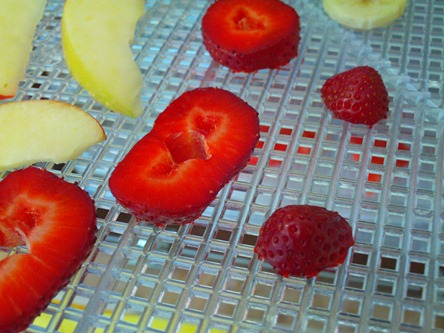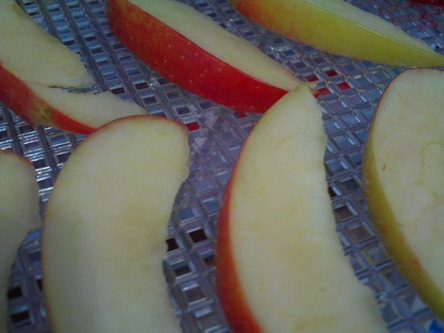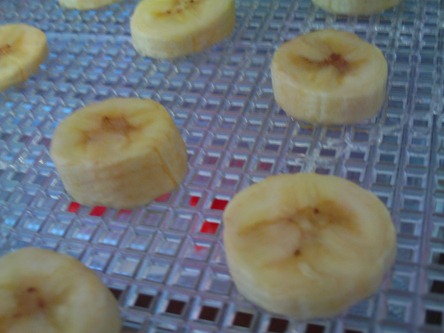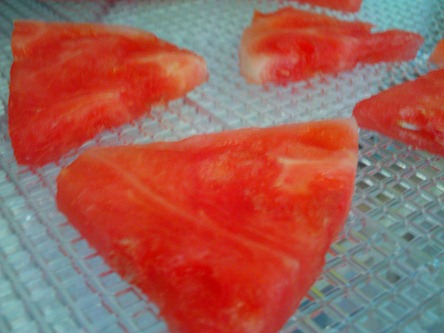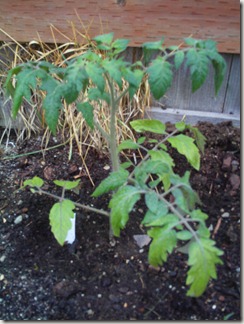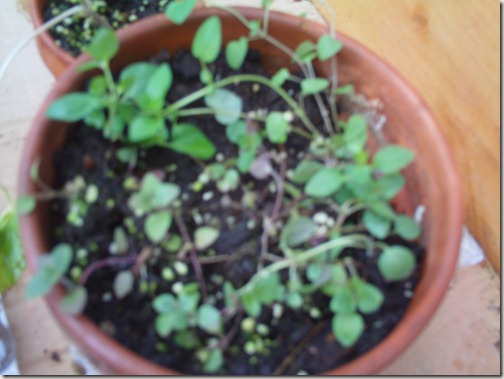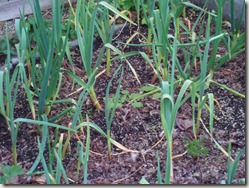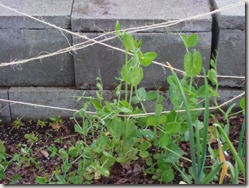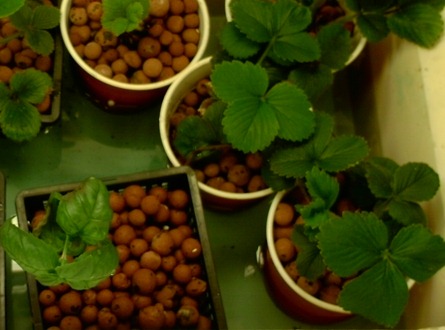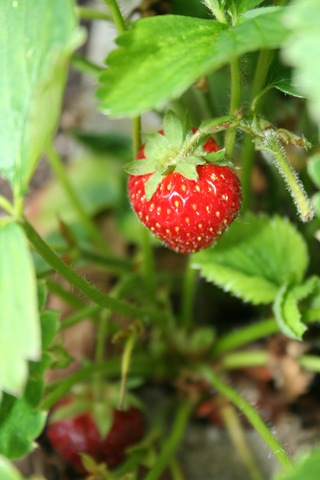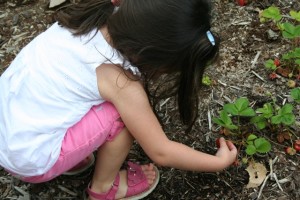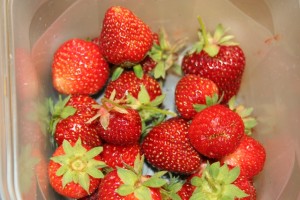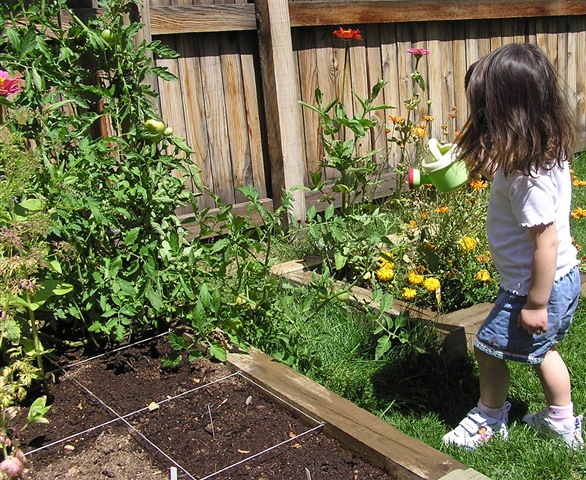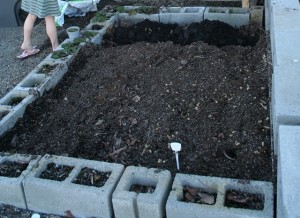Strawberry picking Robots
13.4 years ago robot, strawberries
Well this is not the first time we have seen robots harvesting food and probably not the last but a team in Japan has created a robot that selectively picks strawberries that are at least 80% red. Though this might be good enough for the average consumer at the grocery store, I would personally insist on closer to 95% and hold off until they are a slightly darker red for some extra delicious super ripe berries.
They estimate that this robot can reduce picking time by by 40% but at 9 seconds a berry I am pretty sure I can easily keep up with this monster…though I eventually have to sleep and eat so the numbers may work out. I also would have to make the assumption that this is being targeted for growing hydroponic strawberries given even with my primitive human vision I need to move some leaves around to see most of the berries I pick in my back yard.
There is no word on the cost of this strawberry picking robot but you can check out a video of this bad boy in action below.
Tags: strawberry, strawberry plants
More Fun with Food Dehydrator
14 years ago dehydrator, herbs, strawberries
I decided to be adventurous with the food dehydrator and grabbed some stuff from the refrigerator to make some nice nutritional snacks.
I started with some strawberries, the process is very simple, take some strawberries slice about 1/4 inch thick and place on the tray.
Next I moved on to apples which I soaked in a solution of lemon juice (about 1/4 cup) with 1 cup of water. To add a little extra sweetness I also dumped in a packet of artificial sweetener to reduce the sourness from lemon. After letting the apples soak in this solution for about 3 minutes I added them to the tray.
After slicing bananas about 1/4 inch thick I also soaked these in the same lemonade bath I did for the apples for 3 minutes as well.
Finally I spliced some watermelon at the same approximately 1/4 inch thickness while removing as many seeds as possible and then placing the slices on the trays and moving them into the dehydrator preheated at 100 degrees F.
After about 24 hours the apples were ready and very delicious, these did not last wrong. Next came the strawberries which tasted ok, but were very difficult and basically not worth the time to attempt to wedge from tray and eventually gave up a through most of these away. This was followed by the watermelon which wasn’t quite as messy and tasted like semisweet candy with a light watermelon flavor which seems about right since watermelon does not have nearly as strong a flavor naturally as you would get in artificially sweetened gum or candy. Lastly were the banana chips which were good and were all eaten though for the long time required to dry I probably will opt to buy the non-fried version of these at the store.
Overall it was fun to make these but apples will probably be the only ones in a future rotation but looking forward to drying some garlic, onions, and herbs later this year.
Tags: cheap, garden seeds, garlic bulbs, herb garden, strawberry plants, vegetables
Earth Day in the garden
14 years ago cilantro, cold season crops, garlic bulbs, onions, peppers, tomato
I decided to take the day off to catch up on some things at home and as I ended up outside of course I went right to the garden.
We have seen a few warm days here in the Northwest and in my area we haven’t dipped under 40 degrees at night so seemed like a good time to plant a few of my tomatoes spending their time this winter in the grow box.
Above are a New Yorker and Persey both of which are new for me this year. They have been growing great even with my neglect during their youth. I also have some Green Zebras, Husky Cherry, Sweetie Cherry, and Yellow Cherry. I did attempt Red Brandywine but the seeds I got appear to be duds.
Given it is always good to have a Plan B so I have twins of these tomato plants still in puts which I can bring if a cold snap comes and kills off the plants I ambitiously planted in the ground.
Elsewhere in the garden I have some herbs: Parsley and Oregano, with Basil being an unfortunately casualty which I will plan on buying from the store and try again next year.
Next I checked out my larger garden bed to see my peas, cilantro, onions, carrots, lettuce, strawberries and garlic
Lastly I checked out the peppers in the grow box which they will stay until we have some warmer nights (at least 50 degrees) otherwise can cause significant stunting of growth. So until then they will remain happy in the grow box and given they are still pretty small, still plenty of room to grow…
Tags: cheap, cilantro, garden seeds, garlic bulbs, growbox, herb garden, outdoor plants, pepper plants, strawberry plants, tomato plants, vegetables
Hydroponic Grow box update
14.1 years ago Uncategorized
Currently in the grow box I have some basil and more recently strawberries added as I was “weeding” my garden I found a bunch more starts. Though I have seen basil do well in hydroponic systems mine is turning pretty leggy and quickly loosing lower leaves. The strawberries on the other hand and thriving in the environment. Probably will let them stay in there a little longer until the peppers get too big and make me move the hydroponic system outdoors.
I also tried some peppers but unfortunately they got a little too much of a freeze from a previous machine failure and didn’t quite make it.
For those who can’t get enough of time lapse videos here is some interesting growth going on in the grow box.
Tags: cheap, growbox, pepper plants, strawberry plants, vegetables
Picking strawberries in the garden
14.9 years ago kids, strawberries
In the past couple years we have grown strawberries the story has been my oldest daughter salivating over the strawberries asking, “Is it red enough yet?”
This year her desire for strawberries is just as great though with the plant maturing as well as the additional plant we propagated last year she has been easily getting her fill with plenty more ripe strawberries on the plants. Not wanted to be wasteful, we went out and picked all of the ripe strawberries.
Not having enough to make something like jam or even some strawberry shortcake for the family we opted to make a strawberry milkshake.
Strawberry milkshake recipe
- handful of strawberries
- 2 scoops of ice cream
- milk
Directions: Add strawberries and ice cream to blender. Blend adding milk until it has the consistency of…well…a milkshake.
Tags: cheap, outdoor plants, strawberry plants, vegetables
How to build a raised vegetable garden
14.9 years ago garden planning, raised garden
Building a raised vegetable garden is a very easy and with the right planning can also be very inexpensive. First you need to answer a few important questions before you get started.
The first you have to pick a location. There are a few things to keep in mind when choosing the location; sun, water, convenience, and competition for nutrients.
SUN – You want to pick a location where the plants will get adequate sun for success. If this is an area where you will be growing summer vegetable a southern facing location should be used. For other cooler crops East/West facing should suffice.
WATER – You want a place that is convenient to water your plants. If you have to unravel/coil up 200 feet of hose every time you water you most likely will begin to have under watered plants during the summer months. If a hose is not really even an option the method of filling a couple five gallon buckets and bringing them to your garden is great exercise.
CONVENIENCE — The more often you walk by your garden the more likely you will not forget about (or neglect it) If it happens to pass it on your trip from my car to your back door you most likely will notice suffering plants or potential additions for tonight’s dinner to harvest.
COMPETITION FOR NUTRIENTS — Make sure your garden is not too close to other planting such as established plants or trees. This will force both sets of plants roots to compete for water and nutrients where both may end up coming up short.
Now you know where to build your garden next is to determine the best materials to build you garden out of. Personally I like cinder blocks since they never have to be replaced, relatively inexpensive, have ability to hold solar energy and as an added bonus have great little holes to grow strawberries in. Now on the negative side I will be the first to admit they are not the prettiest thing to look at and don’t really make the most comfortable bench to sit on.
Below I have included some of the pro and cons of various building materials.
| Building Material | Cost per linear foot | Tools required | Pros | Cons |
| Cinder Blocks | $0.97 | None (other big muscles) | Extra plating area in holes | Hard to sit on, not as aesthetically pleasing |
| Chiseled Wall blocks (2 high) |
$5.96 | None (other big muscles) | Most aesthetically pleasing | Expensive |
| Bricks (3 high) |
$1.36 | None (if dry stacked) | More aesthetically pleasing than cinder blocks | Expensive, and mortar may be required depending on height |
| Wood — Cedar (.75” X 8”) |
$1.60 | Drill (screws) | Looks good, natural appearance | Wood is organic so eventually will decompose. Some assembly required |
Third step is actual construction of your raised garden bed. I agree with Mel Bartholomew’s recommendation (from Square Foot Gardening fame)where he suggests limiting the width of the garden bed to no greater that 4 feet. This allows for easy watering, weeding, and harvesting of your vegetables without any serious reaching. This also works out good since lumber normally comes in 8 or 12 foot increments so very limited waste.
For all methods I recommend digging about 2 inches around your perimeter of your planned raised garden bed. This first will give you a visual idea of your new space but also give the blocks/bricks/wood a good foundation to prevent slipping. Speaking of foundation the weight of block/bricks is enough to keep the dirt in place, though with wood I would recommend creating a 4 foot 1X1 as a cross support every 4 feet to help spread out some of the load as you add soil.
Finally it is time to fill your your garden bed with some great soil. If you happen to be luck enough to have this in your backyard go ahead and fill it up. For the rest of us this is a great time to start your garden off to a good start. I recommend a recipe of three main parts (compost, filler, and “fluff”) of equal quantities. Compost should be self explanatory, great organic material thriving with life. For filler I recommend materials like coconut coir, peat moss, or even some good topsoil. For “fluff” add a material such as perlite or vermiculite to add some moisture retention and some great aeration for your plants roots.
Now all my recommendations above all mention a height of less than 12 inches. There are some good reasons for this given there are not too many vegetables you can’t grow in less than six inches of good quality soil. Assuming you are lucky like me and have an abundance of clay in your backyard this means significantly less soil to purchase when filling. Now this is harder on the back bending over so for someone with limited mobility you can bring up the garden bed to a more comfortable height though there really is no reason to fill the garden bed with 2-3 feet of soil. This is an area to be creative, maybe some free fill dirt for the first couple feet, aluminum cans, anything that can take up space and not use your precious garden soil.
Now if your selection of tools are limited or you just want to get some beds up quickly to start growing some vegetables, there are a many commercial raised garden kits out there.
Tags: compost, led, organic vegetables, outdoor plants, raised garden, strawberry plants, vegetables

